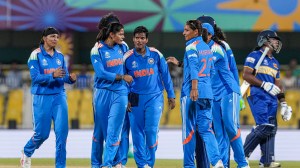Freedom of the imagination
Sixty years on, it hasn’t quite been won. Just look at made-to-order works of art on display in sarkari concerts

As anniversaries go this was a big one. So whoever thought of putting together the cultural programme in Parliament’s Central Hall this Independence Day probably did so with the best intentions. And yet nothing could have been more geared towards reminding us how little we have changed in the last 60 years.
Since many may not have switched on their television sets for the evening ceremony on August 15, let me quote from an eye-witness account: “The evening began with President Pratibha Patel arriving in state, accompanied by Vice President Mohammed Hamid Ansari, who is also the chairman of the Rajya Sabha, Prime Minister Manmohan Singh and Lok Sabha Speaker Somnath Chatterjee. Trumpeters announced their arrival as they transited from the red carpet on the corridor leading to the Central Hall to the green wall-to-wall carpet of the chamber and took their seats on the flower-bedecked dais. Gazing down at them was a portrait of a benign Mahatma Gandhi,” reports India eNews. “If sarod maestro Amjad Ali Khan and his sons Ayan and Aman tugged at the heartstrings with their moving rendition of two of Mahatma Gandhi’s favourite bhajans, lyricist Javed Akhtar reminded the world of the greatness that was India, while eminent classical vocalist Jasraj held the audience spellbound with a combination of religious hymns and patriotic songs. The event was telecast live across the nation by state broadcaster Doordarshan.”
Ceremonial pomp, banality, nostalgia, maudlin tunes and national coverage — in short, the typical sarkari cultural cocktail. One could argue that this is a fairly conventional format for patriotic celebrations the world over; one could even argue a show of solidarity between servants of the state and artists has a touching Hollywood-Bollywood style value — recall Nehru in tears at Latadidi’s mellifluous rendering of ‘Ae mere watan ke logon’. Yet given our eagerness to proclaim ourselves a modern nation and the growing concern over the symbolic power of the ritual, it is perhaps time to question our adherence to these ghisa-pitta styles of commemoration.
Commentators in recent times have asked how suitable it is for India to parade its armory as we do on Republic Day in a world that increasingly prizes peaceful development over military valour. Similarly one can raise several new age concerns over the typical sarkari cultural event (and indeed it is a matter of arguably greater import serving as it does as a model for cultural events in general). From an environmental point of view, for instance, one could bemoan the colossal waste — given the Indian passion for garlanding and presenting bouquets to every minor plenipotentiary. From a feminist point of view it is irritating, if not downright insulting, to watch young girls in silk saris fetching and ferrying for self-important VIPs or being called on to perform decorative functions such as lighting the diya to flag off a film festival for instance.
But these are relatively trivial matters of detail, quibbles compared to the main problem with a show like the one put up at the Central Hall this week. And that is the manner in which it defines the relationship between the state and art. That there is a relationship at all was acknowledged as far back as the fifties, by the government of free India through the setting up of various akademis to promote art and culture. Since then the business of state patronage of the arts has been a hotly debated issue though one that seems to have disappeared from public discourse in recent times. We seem to have resigned ourselves to the sad reality of equating political patronage of the arts with political jockeying and nepotism. In fact, so accustomed have we become to seeing the relationship in this light, that we now even look upon the personal predilections of political leaders on the subject almost as affectionate fads (L.K. Advani’s fondness for Hindi films, Vajpayee’s poetry being sung).
Regrettable as this state of affairs is, the sarkari concert attempts something equally unfortunate by boxing artists in one evening’s performance and bending their metre to the express purpose of marking an occasion. “If there is anything ugly, it is the made-to-order work of art,” said Dr Rajendra Prasad while inaugurating the Sangeet Natak Akademi in January 1953. The impact of this particular lack of aesthetic is something for us to ponder over. Meanwhile, for the years to come perhaps we could ask our leaders for a little more freedom of the imagination.



- 01
- 02
- 03
- 04
- 05




























